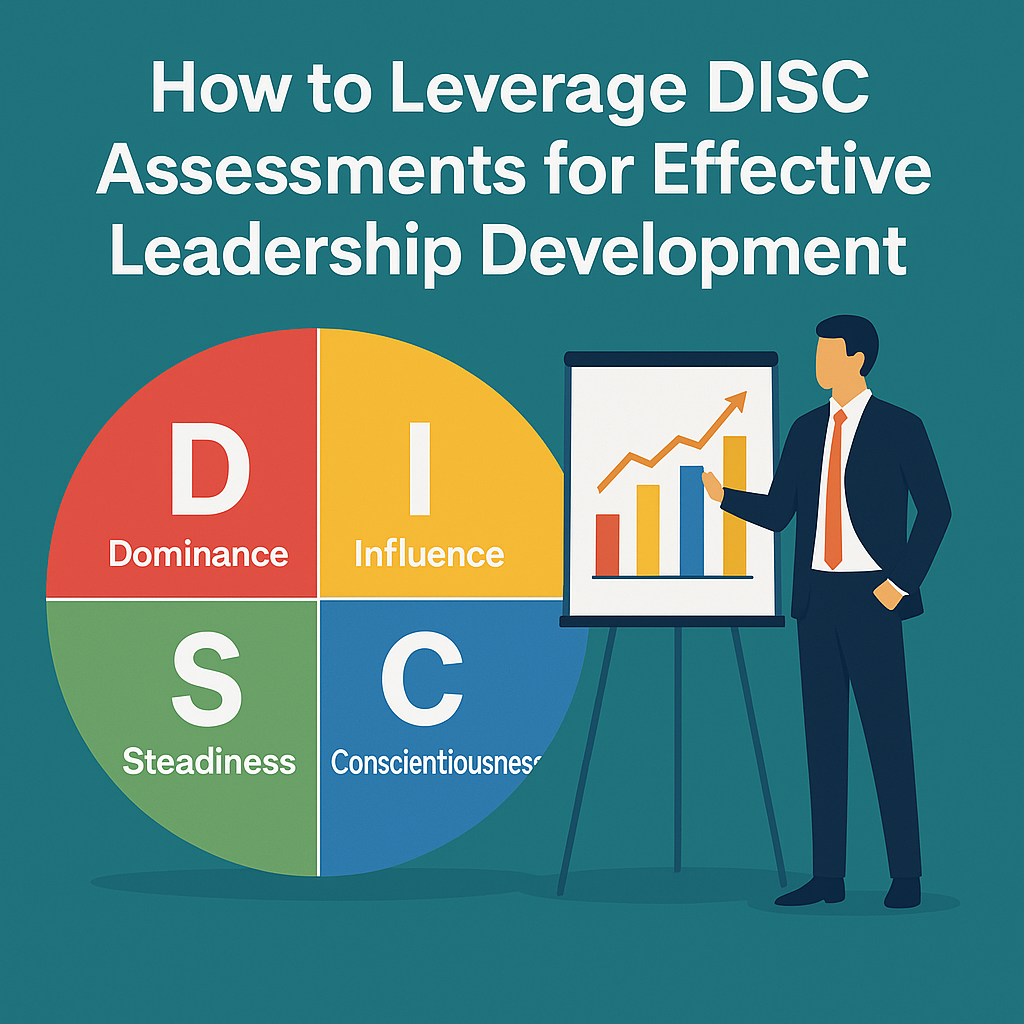How to Leverage DISC Assessments for Effective Leadership Development
Leadership isn’t one-size-fits-all. The best leaders understand themselves and their teams—and adapt accordingly. One of the most effective tools for developing self-awareness and team alignment is the DISC assessment. By identifying personality styles, DISC helps leaders grow in emotional intelligence, communication, and decision-making. Here’s how to harness DISC assessments to become a more effective leader.
- Build Self-Awareness and Emotional Intelligence
The first step in leadership development is understanding your own natural tendencies. DISC helps leaders:
- Recognize their dominant behavioral style
- Understand how they react to pressure or conflict
- Identify their communication strengths and blind spots
For example, a Dominant (D) leader may learn to temper their assertiveness to better connect with team members who prefer a more collaborative approach.
- Understand and Adapt to Your Team’s Styles
Each team member has a unique DISC profile. When leaders understand these styles, they can adapt their approach to motivate, inspire, and communicate more effectively.
- Influence (I) team members thrive on recognition and collaboration.
- Steadiness (S) types value consistency and a supportive environment.
- Conscientious (C) individuals prefer clear expectations and data-driven decisions.
Adapting your leadership style fosters trust, reduces misunderstandings, and increases team engagement.
- Enhance Communication and Reduce Conflict
DISC provides a framework for understanding how people prefer to give and receive information. Leaders who use DISC:
- Tailor their communication to match individual preferences
- Reduce friction and miscommunication
- Create a more inclusive and responsive work environment
By recognizing communication triggers, leaders can avoid unnecessary conflict and build stronger rapport with their teams.
- Improve Team Performance and Collaboration
High-performing teams often have a balance of DISC styles. Understanding team dynamics allows leaders to:
- Assign roles based on strengths
- Balance personalities for better collaboration
- Identify gaps and opportunities for growth
Leaders can also use DISC to guide team development activities and facilitate more productive meetings.
- Strengthen Decision-Making and Strategic Thinking
Each DISC style has a unique approach to decision-making. Awareness of these styles helps leaders:
- Make more balanced decisions by seeking input from diverse perspectives
- Avoid overreliance on their natural tendencies
- Build consensus and buy-in from the team
A Conscientious leader may focus on data, while an Influential leader may prioritize people—both perspectives are valuable when balanced correctly.
- Foster a Culture of Growth and Accountability
Leaders who integrate DISC into their development processes demonstrate a commitment to growth. They:
- Provide personalized coaching based on DISC insights
- Encourage open dialogue about working styles
- Set an example of adaptability and continuous learning
This creates a ripple effect throughout the organization, where team members feel seen, valued, and empowered.
Conclusion
Leveraging the DISC assessment is more than a leadership trend—it’s a strategic advantage. By building self-awareness, adapting to team needs, and fostering stronger communication, leaders can unlock higher performance, deeper trust, and lasting impact. At The Guru Agency, we help leaders use tools like DISC to elevate their leadership journey and create thriving, people-first cultures.
